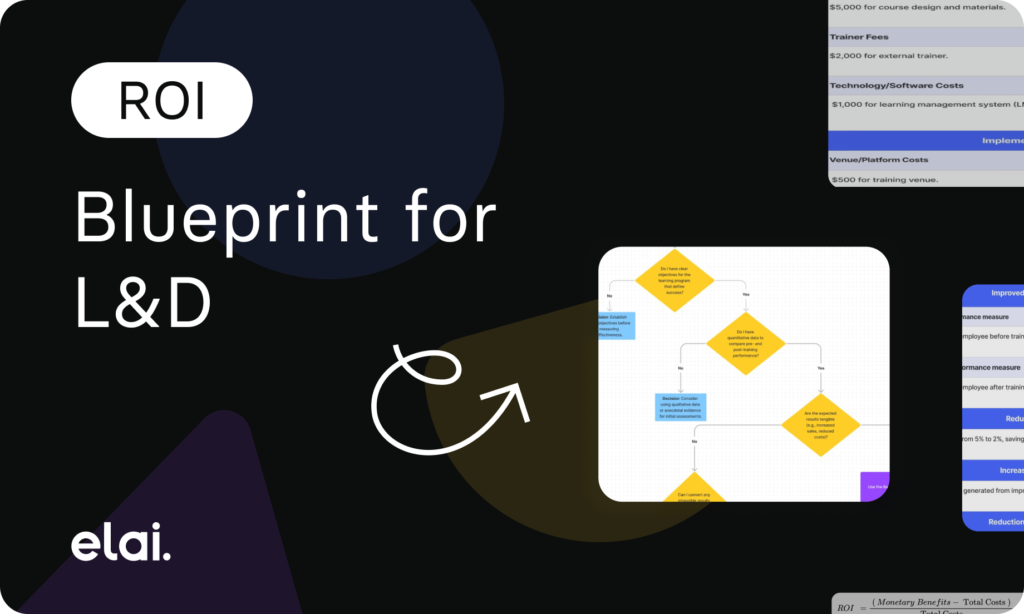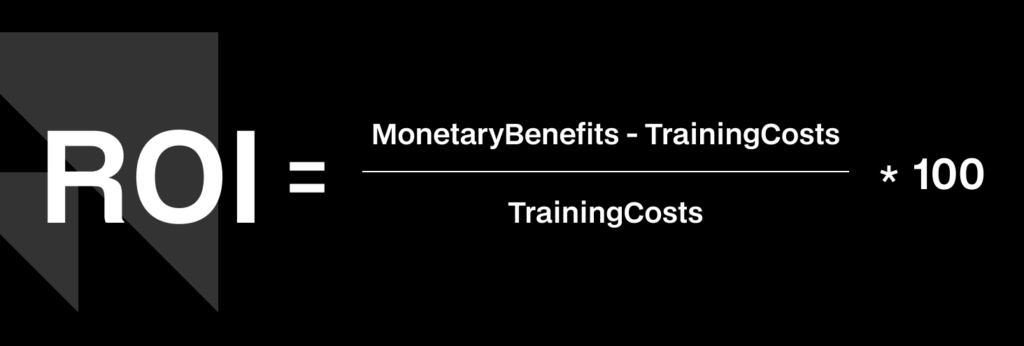In the current dynamic business world, there is an increased expectation of getting tangible results and demonstrating them with Returns on Investments (ROI) made in the crucial for the business success world of Learning and Development. The calculation of ROI for Learning and Development is a significant measurement tool that enables organizations to evaluate the efficiency of the applied training programs and their relationship to organizational performance. This article discusses the importance of ROI for L&D, various approaches to determining it, issues arising when calculating ROI, and how ROI assessment can be incorporated into training programs.
The ROI for Education: Why It’s Crucial
Measuring L&D ROI is important for several reasons:
Management and investors also want to know how they are spending their money on training and development. The proof of ROI is essential to explain the need for expenses on L&D activities.
Evaluating the return on investment of training programs helps to guarantee that L&D activities are relevant to an organization. This alignment enables focusing on those projects that are strategic to performance and business success.
Measuring ROI periodically reveals what strategies are effective and ineffective to help organizations improve the effectiveness of their training.
Understanding which programs give the highest ROI means that the organization directs resources to the right areas where they will be more effective and useful than in other areas that will not yield much.

Several Approaches to Measuring Return on Investment in Education
Several models can be used to evaluate ROI metrics for Learning and Development, each serving specific purposes depending on the training context and objectives:
Basic ROI Formula: The least sophisticated approach involves assessing the ratio of the monetary value of the benefits to the costs of training. The formula is:

This model is ideal for use in programs that can easily quantify the value of training in terms of the tangible, financial returns on investment such as sales.
Phillips ROI Model: This model was developed by Jack Phillips and built upon the basic ROI formula by including other non-financial benefits such as the enhancement of the morale of the employees or the satisfaction of the customers. It involves a more detailed analysis, including the following steps:
- Define and measure tangible outcomes.
- All intangible benefits should be quantified in monetary terms.
- Identify the total benefits and then use the basic ROI equation.
Kirkpatrick’s Four Levels of Evaluation: Kirkpatrick’s model, although not as literal as ROI calculation, measures training effectiveness in four levels; Reaction, Learning, Behavior, and Results. The Results level can be incorporated into ROI calculations to quantify the monetary value of training.
Cost-Benefit Analysis (CBA): CBA compares the total expected cost of a training program with the total expected benefits of the training program. It is more general and encompasses both quality and quantity, which makes it appropriate for general evaluations.
Hybrid ROI Model: This approach uses both the quantitative data, which are the measurable data, and the qualitative data, which are the non-measurable data. It is aware of the fact that not all training returns can be measured in financial terms.
Challenges in Measuring ROI in L&D
Despite the importance of measuring ROI, organizations face several challenges:
- Data Collection: One of the major challenges of ROI analysis is the collection of proper data. There may be no adequate systems for measuring performance indicators hence the difficulty of measuring organizational gains.
- Attribution: It may not always be easy to directly link training to business results. Numerous factors affect performance and it becomes difficult to separate the effect of training from other factors.
- Intangible Benefits: Some of the advantages of training in an organization, for instance, higher morale or greater employee involvement, are hard to measure in monetary terms. Turning these benefits into their dollar equivalents is a little easier said than done, as the next step illustrates.
- Changing Business Context: The environment in which businesses operate is constantly evolving, and some parameters, for example, market trends or an economic crisis, can influence training results and make it difficult to determine the proper ROI for L&D example.
- Resistance to Measurement: Some stakeholders may not embrace the use of ROI because of ignorance or disagreement with the idea that training returns should be quantified. This resistance can prevent the adoption of systematic evaluation processes.
- Skill Gaps in Measurement: While formal ROI calculations can be accomplished with relative ease, L&D professionals may not always be equipped with the skills or knowledge to perform the underlying analysis that creates the need for ROI, thus rendering the analysis ineffective.
Using ROI for Strategic Planning of Online Education
To effectively implement ROI evaluations in your L&D initiatives, consider the following actionable steps:
- Set Clear Objectives: Set clear and quantifiable goals for training activities. You need to have clear goals to help you in the ROI evaluation process so that it can be in line with the business results.
- Collect Data: Collect data quantitatively and qualitatively at pre and post-training. This may comprise organizational performance standards, organizational climate, and organizational culture questionnaires.
- Utilize a Decision Tree: You should use a decision tree while evaluating the project. This tool enables one to know whether the results of the training can be measured and the right ROI model to use.
- Calculate Costs and Benefits: Record all the expenses incurred in the development of the training program, those incurred in the delivery of the training program, and those incurred in the participants. In the same manner, determine the advantages and put dollar signs to them.
- Analyze and Interpret Results: After you have determined ROI, it is important to evaluate the results that you get in order to make valid conclusions. It is recommended to look for trends, success as well as areas of concern.
- Communicate Findings: The ROI results should be presented to the stakeholders. Try to support the training investment with clear and convincing visuals and data narratives.
- Make Data-Driven Decisions: It is important to use the findings of ROI analysis to guide future training programs. Change programs according to what worked before and look for the areas of improvement.
Summing Up
Learning and development ROI is not simply about the figures; it is about recognizing the worth of training and developing individuals. Thus, the right models and methodologies on how to calculate ROI for L&D allow us to evaluate the efficiency of the training programs, correlate L&D activities with business objectives, and guarantee that every invested dollar will bring benefits to the organization. As the discipline of L&D matures, it will be vital to have a strong approach to the measurement of ROI in order to have a sustained focus on the delivery of improved performance. Nonetheless, an effort to maintain the measurement of ROI can lead to improved results for both parties in an organization as well as the staff members.
